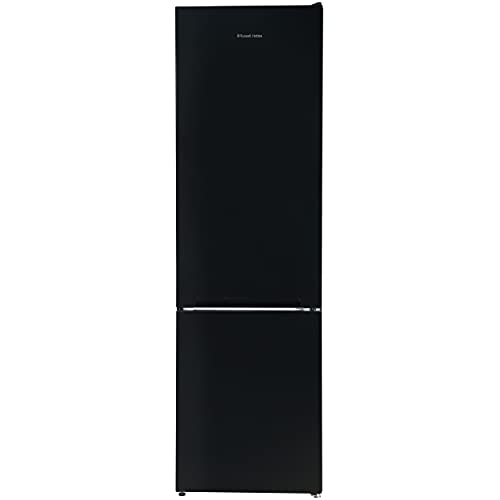
Fridge Freezers Near Me
FollowOverview
-
Founded Date February 11, 1935
-
Sectors Logistic Transport
-
Posted Jobs 0
-
Viewed 13
Company Description
Say “Yes” To These 5 Fridges And Freezers Tips

Understanding Fridges and Freezers: The Essential Kitchen Appliances
Refrigerators and freezers are 2 of the most necessary devices in modern-day cooking areas. These devices serve an essential function in food conservation and waste decrease by guaranteeing that perishable products remain fresh and safe for usage. This short article dives into the different kinds of fridges and freezers, their functionalities, and important factors to consider for choice and upkeep.

Kinds of Refrigerators
The marketplace offers a range of refrigerator types, each created to meet various consumer needs. Below is a list of the most common types of fridges:
-
Top-Freezer Refrigerators
- Most common type.
- Freezer compartment lies above the refrigerator area.
- Usually more cost effective and energy-efficient.
-
Bottom-Freezer Refrigerators
- Freezer is situated at the bottom.
- Enables much easier access to fresh products at eye level.
- Typically includes pull-out drawers for much better company.
-
Side-by-Side Refrigerators
- Refrigerator and freezer sections are surrounding.
- Suitable for narrow kitchens and permits simple access to both compartments.
- Typically comes with water and ice dispensers.
-
French Door Refrigerators
- Integrates a bottom freezer with double doors at the top.
- Deals adequate storage and stylish styles.
- Often includes features like temperature-controlled drawers.
-
Compact Refrigerators
- Smaller sized size perfect for limited spaces.
- Frequently used in dormitory, studio apartments, or as secondary fridges.
Table 1: Comparison of Refrigerator Types
| Type | Benefits | Drawbacks | Typical Size |
|---|---|---|---|
| Top-Freezer | Inexpensive, energy-efficient | Less hassle-free access to the freezer | 14-30 cu. ft. |
| Bottom-Freezer | Much easier access to fresh food | Freezer can be harder to organize | 19-30 cu. ft. |
| Side-by-Side | Easy gain access to, water/ice dispenser | Narrow vs. storage space | 22-30 cu. ft. |
| French Door | Elegant, spacious, organized | More pricey | 20-30+ cu. ft. |
| Compact | Space-saving, portable | Limited storage | 1.7-5.5 cu. ft. |
Types of Freezers
Freezers are an equally crucial home appliance for food preservation. They are available in different designs created to fit various household needs. Consider the list below types:
-
Upright Freezers
- Run like a standard refrigerator with vertical storage.
- Much easier to organize with shelves and compartments.
-
Chest Freezers
- Big, horizontal design normally offering more storage area.
- Maintains temperatures much better during power outages.
- More energy-efficient than upright designs.
-
Portable Freezers
- Compact units ideal for outdoor activities or little areas.
- Often used for camping journeys or as short-lived storage.
Table 2: Comparison of Freezer Types
| Type | Advantages | Drawbacks | Typical Size |
|---|---|---|---|
| Upright Freezer | Much easier to organize | Less energy-efficient, more floor space | 5-20 cu. ft. |
| Chest Freezer | Holds more products, energy-efficient | Harder to organize | 5-25 cu. ft. |
| Portable Freezer | Compact and versatile | Limited storage capacity | 1-10 cu. ft. |
Key Features to Consider
When picking a fridge or freezer, consumers need to keep in mind several functions that can enhance performance:
- Energy Efficiency: Look for designs with the ENERGY STAR certification to minimize electrical energy bills.
- Storage Capacity: Evaluate storage requirements based upon family size and consuming practices.
- Temperature Control: Some devices use digital controls for accurate temperature settings.
- Adjustable Shelving: Customizable shelving enables ideal company.
- Water and Ice Dispenser: Offers convenience however can use up valuable space inside.
- Sound Level: Sound ratings can influence comfort, particularly in open-concept homes.
Pros and Cons of Having a Fridge and Freezer
While fridges and freezers are vital innovations, they likewise have particular benefits and drawbacks:
| Pros | Cons |
|---|---|
| Maintain food life expectancy and minimize waste | Require regular maintenance |
| Permit bulk buying and meal prepping | Can be pricey to purchase and run |
| Deal convenience and quick access to food | Inhabit significant kitchen area area |
Maintenance Tips
To ensure longevity and ideal efficiency of fridges and freezers, think about the following upkeep suggestions:
- Regular Cleaning: Clean the exterior and interior occasionally to prevent accumulation of dirt and germs.
- Examine Seals: Inspect door seals regularly for leaks to preserve effectiveness.
- Temperature Settings: Keep the fridge at 34-38 ° F and the freezer at 0 ° F for ideal food preservation.
- Defrost as Needed: Chest freezers ought to be thawed frequently to maintain efficiency.
- Clear Air Vents: Ensure that airflow isn’t blocked to improve energy efficiency.
FAQs About Fridges and Freezers
Q1: How long can food be kept in a freezer?A: Most foods can be kept in a freezer for several months. Meats and poultry frequently last 4-12 months, while veggies can last approximately 8-12 months.
Q2: How frequently must I clean my fridge and freezer?A: It is suggested to clean your Cheap fridge uk and freezer every 3 to 6 months, or as needed when spills occur. Q3: Can I put hot food directly in the fridge?A: It is recommended to cool hot food to room temperature before putting it in the fridge to avoid
raising the temperature level inside the device. Q4: Why is my fridge running constantly?A: This could be due to a malfunctioning thermostat, clogged coils, or door seals that aren’t working effectively. Fridges and freezers are important
possessions to modern homes, providing necessary services for food storage and preservation.
Understanding the different types, functions, and maintenance requirements can help consumers choose the ideal devices for their requirements and optimize their performance. Welcoming energy-efficient designs not just supports sustainable practices but likewise contributes to considerable cost savings on energy bills, making notified options more important than ever.
